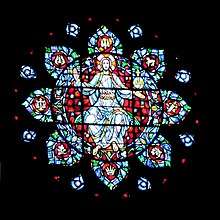Harvard Psilocybin Project

The Harvard Psilocybin Project was a series of experiments in psychology conducted by Dr. Timothy Leary and Dr. Richard Alpert. The founding board of the project consisted of Leary, Aldous Huxley, David McClelland (Leary's and Alpert's superior at Harvard University)[1], Frank Barron, Ralph Metzner, and two graduate students who were working on a project with mescaline.[2]
The experiments began some time in 1960 and lasted until March 1962, when other professors in the Harvard Center for Research in Personality raised concerns about the legitimacy and safety of the experiments in an internal meeting.[3][4][5] Other professors were concerned with Leary and Alpert's abuse of power over students. They pressured graduate students to participate in their research who they taught in a class required for the students' degrees. Additionally, Leary and Alpert gave psychedelics to undergraduate students despite the university only allowing graduate students to participate. The legitimacy of their research was questioned because Leary and Alpert took psychedelics with the students during the experiments. Also, the selection of research participants was not random sampling. These concerns were then printed in The Harvard Crimson and the publicity that followed resulted in the end of the official experiments, an investigation by the Massachusetts Department of Public Health that was eventually dropped, and the firing of Leary and Alpert.
Leary and Alpert’s experiments were part of their personal discovery and advocacy of psychedelics. As such, their use of psilocybin and other psychedelics ranged from the academically sound and open Concord Prison Experiment, in which inmates were given psilocybin in an effort to reduce recidivism, to frequent personal use.
The Marsh Chapel Experiment, an example of the Project's activities, was run by a Harvard Divinity School graduate student under Leary's supervision. Boston area graduate divinity students were administered psilocybin as a part of a study designed to determine if the drug could facilitate the experience of profound religious states, and nine out of the ten divinity students reported such experiences.
At the time only Mescaline and the Peyote cactus were illegal. It would be five years until LSD and psilocybin were made illegal. Both Leary and Alpert had been rising academic stars until their battles with Harvard and their advocacy of the use of psychedelics made them major figures in the nascent counterculture.
Huston Smith's last work, Cleansing the Doors of Perception, describes the Harvard Project in which he participated in the early 1960s as a serious, conscientious, mature attempt to raise awareness of entheogenic substances. Of the members of the subgroup in which Smith took part, Leary is not listed.
See also
References
- ↑ "Leary Lectures at Harvard for First Time in 20 Years". The New York Times. 25 April 1983. Retrieved February 16, 2018.
- ↑ Stafford, Peter; Jeremy Bigwood (1993). Psychedelics Encyclopedia. Ronin Publishing. ISBN 0-914171-51-8.
- ↑ Davidson, Sara (Fall 2006). "The Ultimate Trip". Tufts Magazine.
- ↑ Kansra, Nikita; Shih, Cynthia W. (21 May 2012). "Harvard LSD Research Draws National Attention". The Harvard Crimson.
- ↑ Department of Psychology. "Timothy Leary (1920-1996)". Harvard University. Retrieved February 16, 2018.
External links
- The Vaults of Erowid Psilocybin mushrooms
- MAPS Psilocybin research
- Leary's active participation in the Marsh Chapel Experiment and its effects on Reverend Randall Laakko (who, at the time, was a student at the Divinity School) are depicted in a segment of a BBC video, which can be viewed here.